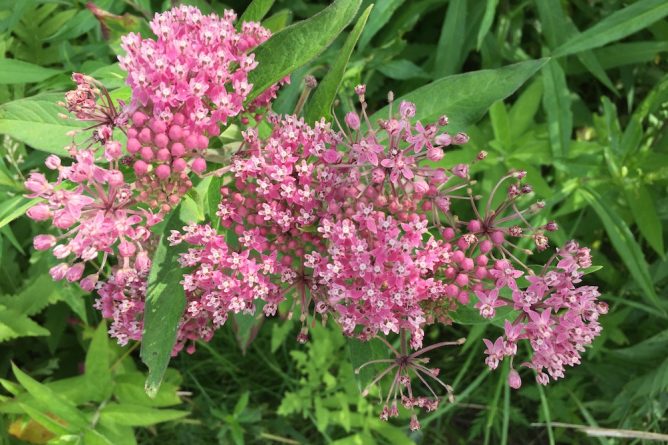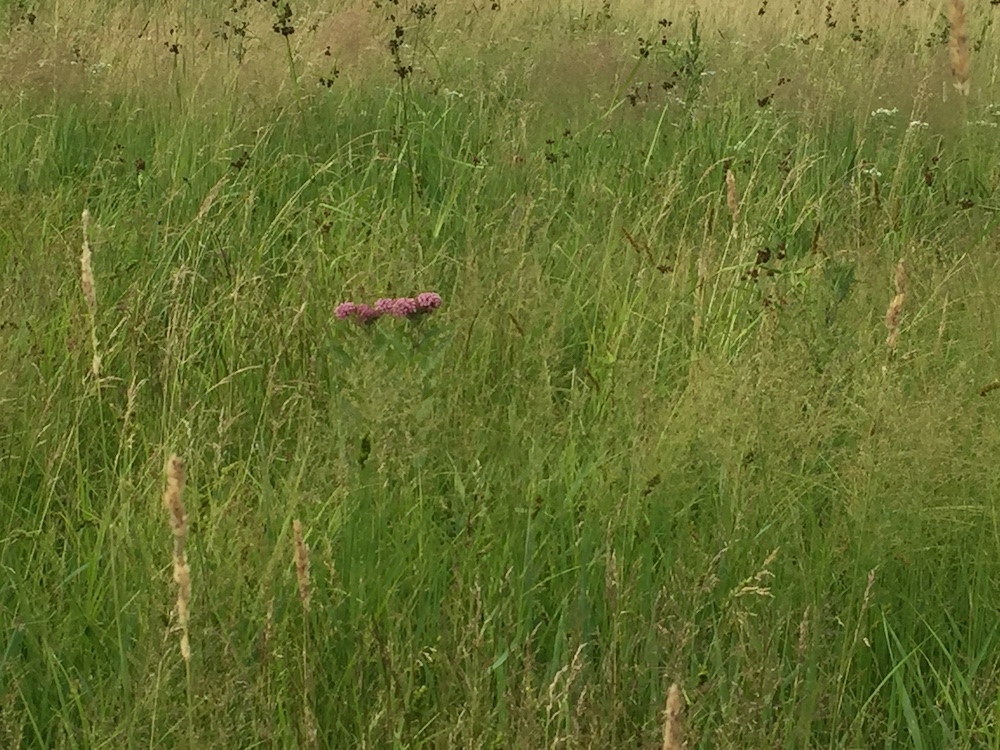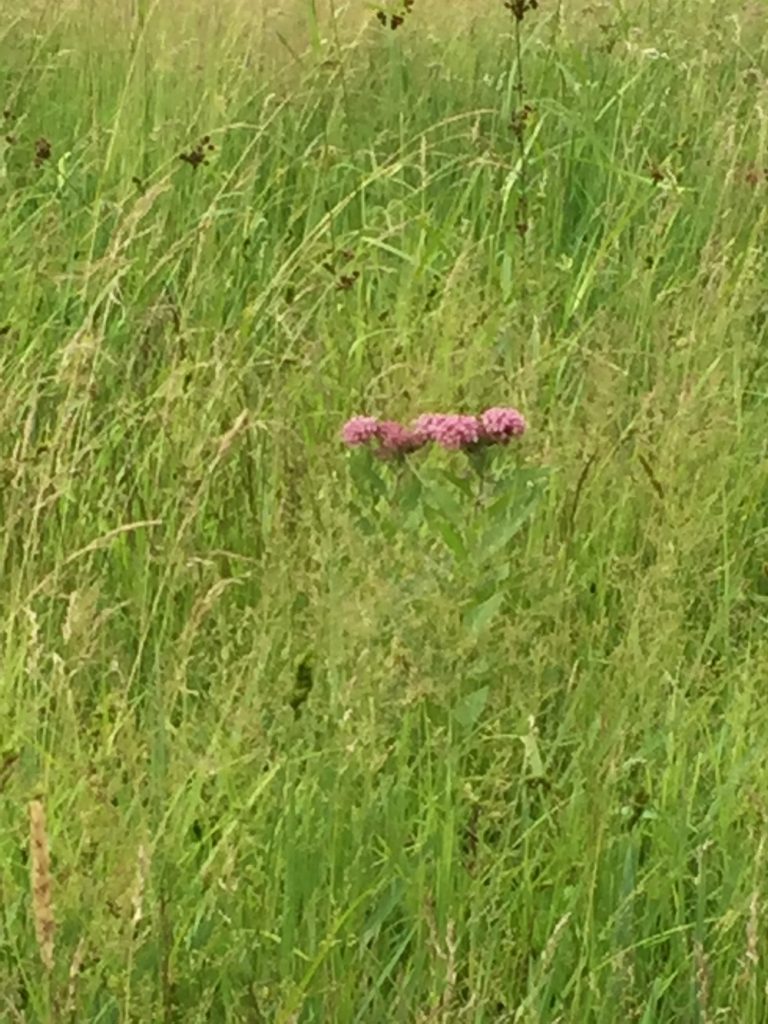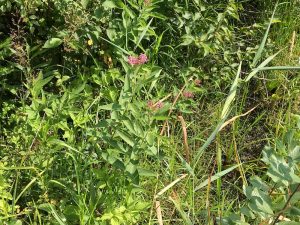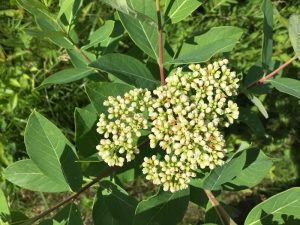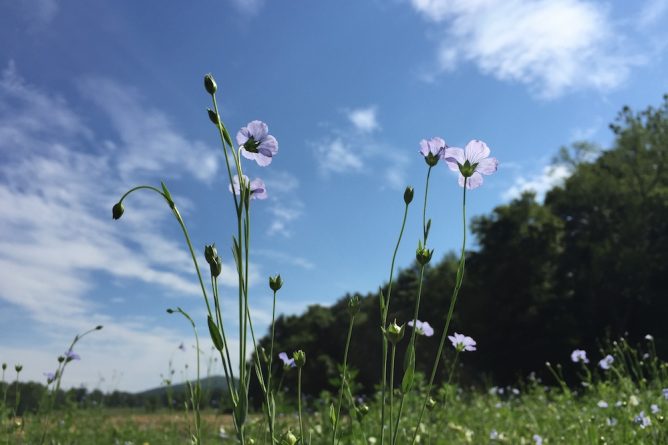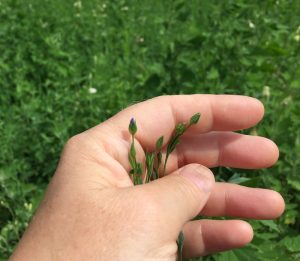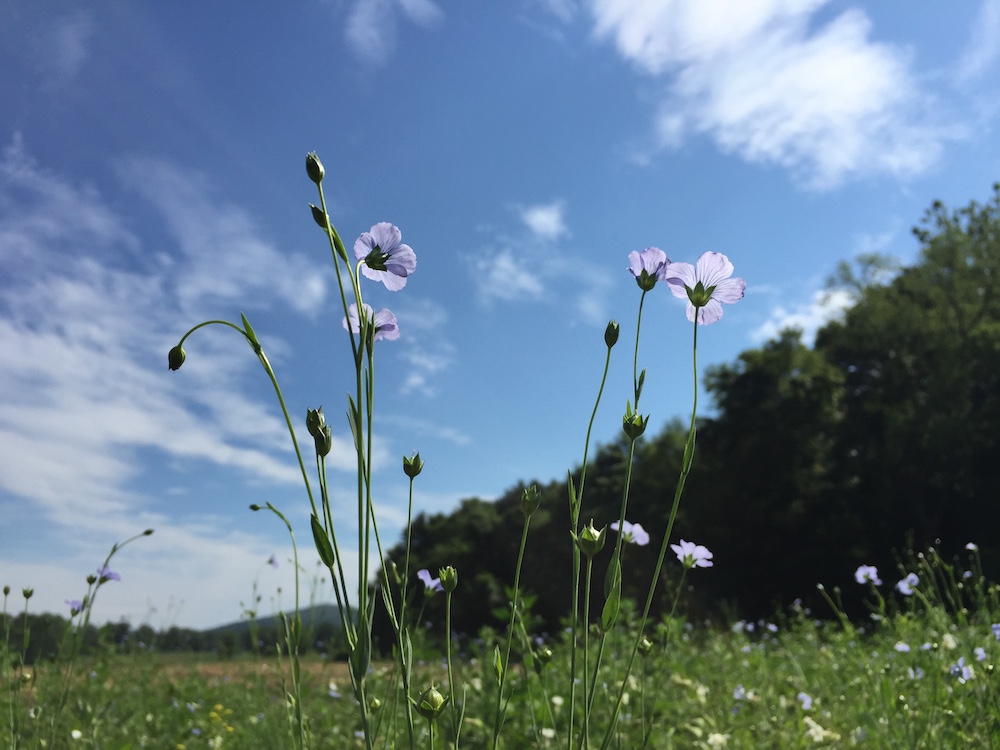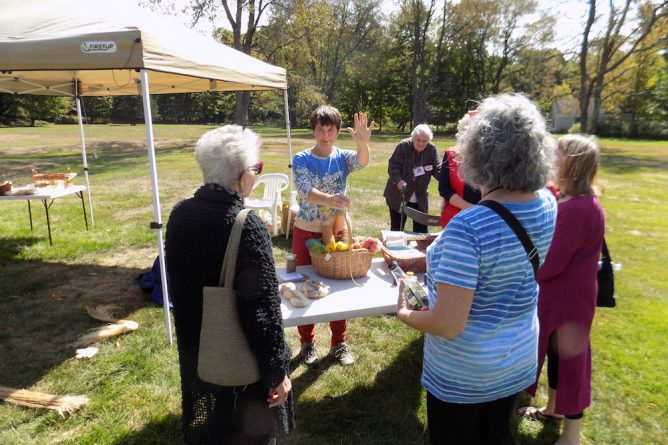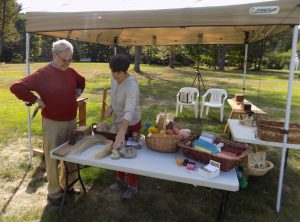I first learned to identify swamp milkweed (Asclepias incarnata) in 2012 after discovering some lovely fibers near my sister’s apartment in Maryland. In 2015 I acquired some plants from Nasami Farm in Whately, MA for the Common School‘s fiber and dye plant garden at Bramble Hill Farm. For all this time, I have been keeping an eye out for it “in the wild” but haven’t seen it. Until now! (12/30/2023 I updated the link to Nasami.)
This month I have been spotting swamp milkweed all over the place. The first place I noticed it was in the bluebird field at Amherst College on July 6th. Admittedly, these photos are a bit like photos of Big Foot: blurry and indistinct. Trust me, though, it is swamp milkweed!
The next place I caught a sighting was in the Lawrence Swamp area of the Norwottuck Rail Trail in Amherst. It was right in the swamp, aptly. We could see several plants further out, but ran into the same blurry Big Foot photo problem. This one was close to the edge of the trail:

